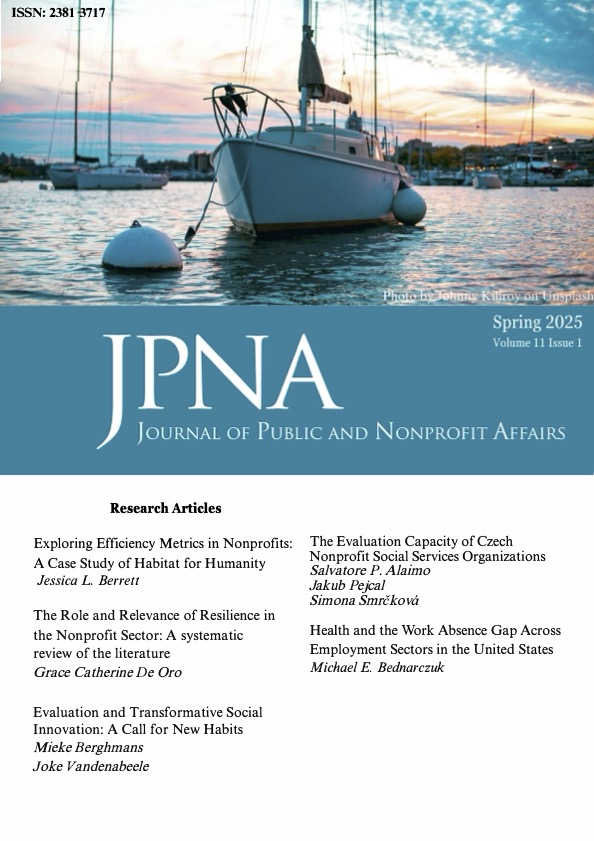Health and the Work Absence Gap Across Employment Sectors in the United States
DOI:
https://doi.org/10.20899/jpna.8xaca558Keywords:
absenteeism, physical health, mental healthAbstract
Those in the public sector in the United States are historically known to have more work absences than those in the private sector. While long attributed to various individual-level or organizational-level characteristics, there has not been an examination of the role that physical and mental health may play in impacting that difference. Using data gathered from the National Health Interview Study, descriptive statistics found that those in the public sector tend to be in worse physical health but better mental health than those in the private sector. While Poisson models found that health did not impact the likelihood of those in the public sector having more absences than those in the private sector, a Blinder-Oaxaca decompositional analysis found that the majority of the gap in absences across sectors can be attributed to the distribution of characteristics across the private and public sectors. These findings suggest that demographic and organizational differences across the public and private sectors, not simply health, are the main determinants of the gap in work absences across sectors.
Downloads
Published
Issue
Section
License
Authors who publish with this journal agree to the following terms:
- Authors retain copyright and grant the journal right of first publication with the work simultaneously licensed under a Creative Commons Attribution License that allows others to share the work with an acknowledgment of the work's authorship and initial publication in this journal.
- Authors are able to enter into separate, additional, contractual arrangements for the non-exclusive distribution of the journal's published version of the work (e.g., post it to an institutional repository or publish it in a book), with an acknowledgment of its initial publication in this journal.
- Authors are permitted and encouraged to post their work online (e.g., in institutional repositories or on their website) prior to and during the submission process, as it can lead to productive exchanges, as well as earlier and greater citation of published work (see, The Effect of Open Access).







